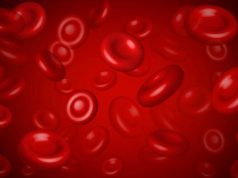Cutaneous IBD manifestations should be considered with unexplained skin lesions in these patients
WEDNESDAY, Aug. 10, 2016 (HealthDay News) — Cutaneous manifestations of inflammatory bowel disease (IBD) should be considered when reviewing unexplained skin lesions, particularly in patients with Crohn’s disease (CD), according to research published online Aug. 6 in the Journal of Cutaneous Pathology.
Jennifer S. Ko, M.D., Ph.D., from the Cleveland Clinic Foundation, and colleagues cross referenced 4,147 classified IBD (Crohn disease [CD] or ulcerative colitis [UC]; 2000 to 2013) resections with skin biopsies. Biopsies were categorized by basic reaction pattern and neutrophilic versus granulomatous.
The researchers found that 133 patients had non-neoplastic skin biopsies (CD: 106 of 2,772 [3.7 percent]; UC: 27 of 1,375 [2.0 percent]). The most common biopsy results were miscellaneous (31.6 percent), nodular and diffuse dermal (21.8 percent), and spongiotic dermatitides (15.0 percent). CD cases showed a bias for spongiotic dermatitis, vasculitis, panniculitis, and infections, whereas UC bias was seen with psoriasiform, perivascular, nodular/diffuse dermal, and bullous categories, as well as neutrophilic processes. CD exclusively was associated with eukocytoclastic vasculitis, panniculitis, and pyoderma gangrenosum, while psoriasis vulgaris was exclusive to UC. Inverse psoriasis was seen for one CD patient.
“Our findings show the majority of dermatopathologic manifestations of IBD to have overlapping histology or pathophysiology to intestinal disease; with a wider spectrum of histologic patterns than typically discussed,” the authors write.
Abstract
Full Text (subscription or payment may be required)
Copyright © 2016 HealthDay. All rights reserved.








